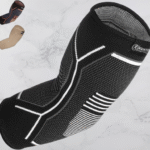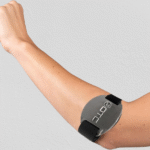Benefits of Using Best Carpal Tunnel Braces
Carpal tunnel syndrome (CTS) is a common condition caused by pressure on the median nerve as it passes through the carpal tunnel in the wrist. This nerve compression can lead to symptoms such as numbness, tingling, pain, and weakness in the hand and wrist, which may extend to the arm. Managing this condition effectively is essential for improving quality of life and preventing further complications. One widely recommended method for managing carpal tunnel syndrome is the use of a wrist brace. Here are the benefits of using a good brace for carpal tunnel in detail.
Alleviates Symptoms
A good brace helps alleviate the primary symptoms of carpal tunnel syndrome, such as numbness, tingling, and pain in the affected hand and wrist. By stabilizing the wrist in a neutral position, a brace reduces the pressure on the median nerve, which is the root cause of these symptoms. Wearing a brace, particularly at night, when symptoms tend to worsen due to the wrist’s positioning during sleep, can significantly reduce discomfort and improve sleep quality.
Supports Recovery and Healing
In cases where carpal tunnel syndrome is still in its early stages, a brace can support natural healing by preventing further damage. Repeated movements or poor wrist posture can aggravate the condition, causing the median nerve to become more compressed. A brace helps to immobilize the wrist and limit these harmful movements, giving the body time to heal and recover. This can prevent the need for more invasive treatments like surgery or steroid injections.
Non-invasive and Cost-effective
One of the major benefits of using a Best Carpal Tunnel Braces is that it is a non-invasive treatment option. Compared to other medical interventions like corticosteroid injections or surgical release of the carpal tunnel, using a brace is far less risky and much more affordable. Braces can be purchased over-the-counter or custom-made by a healthcare professional, and they don’t require downtime or complex recovery, making them an accessible option for most people.
Easy to Use
A Best Carpal Tunnel Braces is typically easy to wear and adjust, even for individuals who are experiencing weakness or discomfort in their hands. Most braces come with Velcro straps, which make it easy to put them on or take them off without needing assistance. This convenience is crucial for people who need to use their hands frequently throughout the day but also require intermittent relief from symptoms.
Improves Hand Function and Mobility
When carpal tunnel syndrome progresses, it can severely limit hand function and reduce mobility, making everyday tasks like typing, writing, and even gripping objects challenging. A brace helps maintain optimal wrist positioning, reducing strain on the median nerve. This not only provides pain relief but also improves hand function over time. With regular use, people may notice that they can perform daily activities with less discomfort and better control over their hand movements.
Prevents Further Injury
Carpal tunnel syndrome can become worse over time if the wrist is not adequately supported or if repetitive stress continues. A good brace offers protection from further injury by limiting unnecessary or harmful movements. It ensures that the wrist remains in a neutral position, which is the safest position for the median nerve. This can prevent the worsening of symptoms and the development of more severe complications, such as permanent nerve damage or muscle wasting in the hand.
Customizable for Personal Comfort
Modern carpal tunnel braces come in a variety of designs and materials that can be customized to suit individual needs. Some braces are lightweight and breathable for use during the day, while others are more rigid for nighttime support. Many braces also come with padding to increase comfort, making them more user-friendly for long-term use. The availability of adjustable braces ensures that individuals can find the right fit and level of support based on their specific condition and lifestyle.
Encourages Proper Wrist Alignment
Poor wrist posture is one of the leading contributors to carpal tunnel syndrome, especially for people who work at computers or engage in activities that involve repetitive wrist motions. A brace helps to maintain proper wrist alignment by keeping the wrist in a neutral position. This not only relieves pressure on the median nerve but also trains the muscles and tendons in the hand and wrist to adopt a healthier posture. Over time, this can lead to better long-term outcomes, as individuals learn to position their wrists correctly, even when they are not wearing the brace.
Beneficial for Day and Night Use
Carpal tunnel symptoms often worsen at night, as many people sleep with their wrists in a flexed position, which increases pressure on the median nerve. Wearing a brace during sleep keeps the wrist in a neutral position, preventing excessive bending or flexing. Additionally, daytime use of a brace can offer continuous relief, particularly for those whose work or hobbies require repetitive wrist movements. The versatility of a good brace, which can be worn both day and night, allows for round-the-clock support.
Reduces Dependence on Medication
Pain relief for carpal tunnel syndrome often involves the use of over-the-counter painkillers or anti-inflammatory medications. While these can be effective, they may also lead to unwanted side effects when used long-term. A brace offers a drug-free solution for managing pain, reducing the need for medication. By using a brace consistently, many individuals find that they can minimize or even eliminate their reliance on painkillers, improving their overall health and well-being.
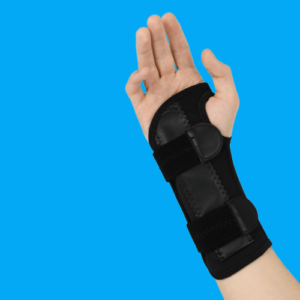
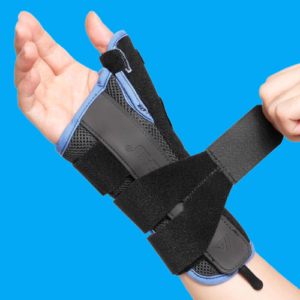
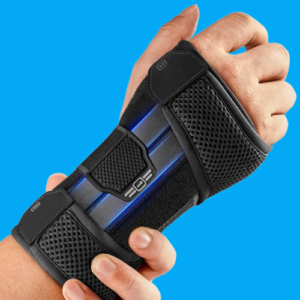
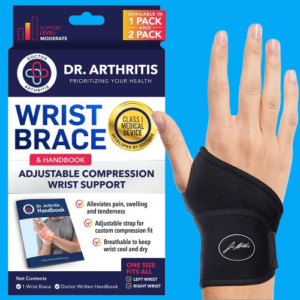
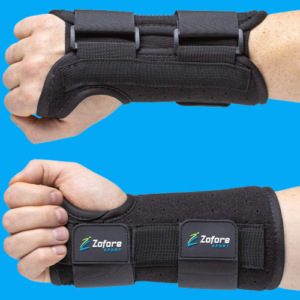
Importance of Best Carpal Tunnel Braces
Carpal Tunnel Syndrome (CTS) is a condition that occurs when the median nerve, which runs from the forearm into the palm, becomes compressed or squeezed at the wrist. This can lead to symptoms like tingling, numbness, weakness, and pain in the hand and arm. A good brace is one of the most common non-invasive treatments recommended for managing CTS, and its significance should not be underestimated. A well-designed brace can provide relief, prevent further damage, and improve quality of life. Here’s a comprehensive look at the importance of using a good brace for carpal tunnel syndrome.
Immobilization of the Wrist
One of the primary functions of a wrist brace for CTS is to keep the wrist in a neutral position, minimizing movement that could exacerbate symptoms. CTS is often caused or aggravated by repetitive movements or poor wrist posture, such as when the wrist is flexed or extended for long periods (as with typing, writing, or using a mouse). A good brace ensures that the wrist remains in an optimal position, reducing strain on the median nerve and preventing further irritation.
The immobilization provided by a brace helps in:
Alleviating pressure on the median nerve.
Preventing repetitive stress injuries.
Reducing inflammation, which is often a significant contributor to the condition.
By restricting unnecessary motion, the brace acts as a safeguard, giving the affected area time to heal or preventing worsening symptoms.
Reduction of Pain and Discomfort
CTS can be incredibly painful, and the discomfort can interfere with daily activities, including sleeping, working, and even gripping objects. A good brace alleviates some of this pain by reducing the pressure on the compressed nerve. By keeping the wrist in a straight position, the brace can reduce the severity of symptoms such as pain, tingling, and numbness, especially during activities that would otherwise strain the wrist.
Nighttime braces are particularly useful for those who experience CTS pain while sleeping, as the wrist may bend into awkward positions without conscious control, exacerbating symptoms. Wearing a brace during sleep keeps the wrist in a neutral position and prevents nocturnal flare-ups.
Prevention of Further Nerve Damage
If left untreated, CTS can lead to permanent nerve damage, resulting in decreased sensation, muscle weakness, and loss of hand function. This underscores the importance of using a good brace early in the treatment process. When used consistently and correctly, a brace can slow or halt the progression of nerve damage, protecting the median nerve from further harm.
Early intervention with a brace can also prevent the need for more invasive treatments, such as corticosteroid injections or surgery. For many people, addressing the condition with conservative measures like bracing may be enough to manage symptoms and avoid long-term complications.
Improvement of Functionality and Mobility
Living with CTS can make everyday tasks challenging, from typing on a keyboard to gripping utensils. The constant pain, tingling, and weakness can affect productivity and reduce overall hand functionality. A good brace helps restore some of this lost functionality by stabilizing the wrist and providing relief from symptoms.
Although the brace limits certain movements, it enables patients to perform tasks without aggravating their condition. For example, by wearing the brace during work or household chores, individuals can continue to be active while simultaneously protecting their wrist from further strain. This balance between stability and mobility is essential for maintaining independence and a good quality of life.
Non-Invasive and Cost-Effective Treatment
One of the major advantages of a wrist brace is that it is a non-invasive treatment option. Unlike surgery or injections, wearing a brace does not come with significant risks or side effects. It is a conservative and safe approach that many patients prefer, especially in the early stages of CTS.
A wrist brace is also relatively inexpensive compared to other medical interventions. Surgery, physical therapy, or injections can be costly, and there is no guarantee that they will completely resolve symptoms. Braces, on the other hand, are widely available and affordable, making them accessible to a broad range of patients.
Customizable and Versatile
Wrist braces come in a variety of shapes, sizes, and designs, allowing individuals to choose one that best suits their needs and lifestyle. For example, some braces are designed specifically for daytime use, allowing for more flexibility and movement, while others are more rigid and intended for nighttime wear.
Many braces are also adjustable, providing a customized fit for different wrist sizes and conditions. This ensures that patients receive the right amount of support without feeling too restricted, which is crucial for adherence to the treatment plan. Having the option to tailor the brace to personal preferences can make a significant difference in comfort and effectiveness.
Types of Best Carpal Tunnel Braces
Carpal tunnel syndrome (CTS) occurs when the median nerve, which runs from the forearm into the hand, becomes compressed at the wrist. This results in numbness, tingling, and pain, primarily in the thumb, index, middle, and ring fingers. Braces are commonly used to alleviate these symptoms by providing support and limiting movement that could aggravate the condition. Here are the most effective types of braces for carpal tunnel syndrome:
Wrist Splints
Wrist splints are the most recommended braces for carpal tunnel syndrome. They stabilize the wrist and keep it in a neutral position, reducing pressure on the median nerve. These braces are typically worn at night since symptoms often worsen during sleep due to awkward wrist positions. Nighttime splints can prevent bending of the wrist and help alleviate morning pain and stiffness.
Compression Braces
Compression braces provide gentle pressure that reduces swelling and inflammation around the carpal tunnel. They are usually made of soft, elastic materials, allowing for some flexibility while still offering support. Compression braces can be worn during the day while performing light activities. However, they may not be as effective as wrist splints in immobilizing the wrist.
Adjustable Wrist Braces
These braces allow the wearer to adjust the level of support and tightness around the wrist. This is ideal for those who need varying levels of compression depending on the activity. Adjustable braces offer more versatility for users who need moderate support while working but prefer more stability during periods of rest.
Rigid Wrist Braces
Rigid wrist braces provide maximum stabilization by preventing wrist movement completely. They often contain metal or hard plastic inserts, which ensure the wrist stays in a fixed position. These are particularly useful in cases of severe carpal tunnel syndrome or post-surgery recovery, where complete immobilization is required to prevent further irritation of the median nerve.
Ergonomic Wrist Braces
Designed for people who spend long hours typing or using a mouse, ergonomic wrist braces help maintain proper hand positioning while performing repetitive tasks. They often come with built-in wrist pads or cushions, offering support without limiting mobility entirely. These are ideal for workplace settings where preventing the condition from worsening is critical.
Advantages of Best Carpal Tunnel Braces
A well-designed brace for carpal tunnel syndrome (CTS) can provide significant advantages in managing the condition and improving quality of life. Carpal tunnel syndrome occurs when the median nerve, which runs through the wrist, becomes compressed, leading to pain, numbness, tingling, and weakness in the hand and fingers. A good brace can offer several key benefits:
Pain Relief
One of the primary advantages of a good carpal tunnel brace is the relief it provides from pain and discomfort. By immobilizing the wrist in a neutral position, the brace helps reduce pressure on the median nerve, alleviating pain and other associated symptoms. This can be especially beneficial at night when symptoms tend to worsen due to wrist flexion during sleep.
Nerve Protection
A high-quality brace helps protect the median nerve from further damage. Carpal tunnel syndrome often worsens over time due to repetitive movements, improper wrist positioning, or excessive strain. A brace encourages the wrist to remain in a position that minimizes nerve compression, helping to prevent the condition from progressing. Early intervention with a brace can protect the median nerve from more serious, long-term damage.
Improved Functionality
People with CTS often experience reduced grip strength and difficulty performing everyday tasks, such as typing, gripping objects, or even holding utensils. A well-designed brace can help improve functionality by stabilizing the wrist and promoting proper movement mechanics. This reduces the strain on the wrist and hand muscles, allowing individuals to perform tasks with greater ease and comfort.
Prevention of Further Injury
For individuals with occupations or hobbies that involve repetitive wrist movements, a carpal tunnel brace serves as a protective measure. Wearing the brace during high-risk activities can help prevent the onset or worsening of carpal tunnel syndrome by providing the necessary support to the wrist. This is especially important for people who work in jobs that require extensive use of their hands, such as typing, assembly line work, or playing musical instruments.
Non-Invasive Treatment
A brace is a non-invasive treatment option compared to surgery. For many people, it can provide significant symptom relief without the need for medical interventions like corticosteroid injections or surgery. Regular use of a brace, combined with other non-invasive treatments like stretching exercises and ergonomic adjustments, can help manage the condition effectively and delay or prevent the need for more invasive procedures.
In conclusion, a good carpal tunnel brace offers numerous advantages, including pain relief, nerve protection, improved functionality, injury prevention, and a non-invasive treatment approach. By immobilizing the wrist in a neutral position and reducing strain on the median nerve, a brace can help manage the symptoms of carpal tunnel syndrome, improving overall quality of life for those affected.
How to Choose the Best Carpal Tunnel Braces?
Choosing a good brace for carpal tunnel syndrome (CTS) involves considering factors that enhance comfort, support, and overall effectiveness. The right brace can relieve symptoms like pain, tingling, and numbness by stabilizing your wrist in a neutral position, reducing pressure on the median nerve. Here’s how to choose the best one for your needs:
Material and Comfort
Look for a brace made from soft, breathable materials like neoprene, cotton, or nylon to keep your skin dry and comfortable, especially if you plan to wear it for extended periods. Some braces have padding around the palm or wrist area, which adds comfort without compromising on support. Avoid materials that may cause allergic reactions or irritation, and ensure the brace is washable.
Support Level
Carpal tunnel braces come in different levels of support—rigid, semi-rigid, and soft. A rigid brace offers maximum stabilization with splints that prevent wrist movement, ideal for nighttime use. A semi-rigid brace provides support with more flexibility, making it suitable for day-to-day activities where some wrist movement is necessary. A soft brace may offer light support and is ideal for mild cases or preventive measures.
Size and Fit
The brace should fit snugly without being too tight. Some braces are adjustable with Velcro straps, allowing for a customized fit, while others come in fixed sizes (small, medium, large). Measure your wrist size to ensure the best fit and avoid braces that are too loose, as they won’t provide adequate support. A well-fitted brace ensures proper immobilization of the wrist, which is crucial for healing.
Purpose: Day vs. Night Use
For nighttime use, a rigid brace is often recommended as it keeps the wrist in a neutral position while you sleep, preventing bending that could aggravate CTS. For daytime use, a more flexible brace is better suited, allowing for movement while still providing support and preventing excessive wrist flexion or extension during daily tasks.
Ease of Use
A good carpal tunnel brace should be easy to put on and take off. Some designs include simple pull-over options, while others have Velcro straps. Make sure it’s easy to adjust with one hand, especially if your symptoms are severe.
Doctor’s Recommendations
Consult your doctor or physical therapist before selecting a brace. They may recommend a specific type based on the severity of your condition and whether you need more wrist immobilization or just mild support.
By considering material, support level, fit, and purpose, you can find the most suitable brace to alleviate carpal tunnel symptoms and aid in recovery.
Features of the Best Carpal Tunnel Braces
A good brace for carpal tunnel syndrome (CTS) is crucial in providing support, reducing pain, and improving wrist functionality. Choosing the right brace can significantly help in managing symptoms and preventing further complications. Here are the key features to look for:
Support and Stability
The primary purpose of a carpal tunnel brace is to keep the wrist in a neutral position, reducing pressure on the median nerve. A good brace should have a splint or rigid support that prevents excessive wrist movement. This stabilizing feature helps to minimize strain on the tendons and nerves, reducing pain and discomfort.
Comfort and Fit
Comfort is essential since many people wear carpal tunnel braces for extended periods, including overnight. A well-designed brace should be made from soft, breathable materials like neoprene or mesh to reduce irritation and sweating. Adjustable straps or Velcro fastenings allow for a customized fit, preventing the brace from being too tight or too loose.
Ergonomic Design
An ergonomic design is critical for proper alignment and comfort. A good brace should conform to the natural shape of the wrist and hand, allowing for a snug fit without constricting blood flow. Some braces come with thumb loops or contoured padding to ensure the hand remains in an optimal position while providing adequate support.
Ease of Use
Carpal tunnel sufferers may experience weakness or limited dexterity in their hands, so a brace that is easy to put on and take off is essential. Simple designs with Velcro closures or slip-on features are ideal, as they can be fastened and adjusted without needing a lot of hand strength or coordination.
Breathability and Material Quality
The materials used in the brace should allow for adequate ventilation to avoid skin irritation, especially when worn for long periods. High-quality, durable materials are important for longevity, as carpal tunnel symptoms can persist for months or even years. Moisture-wicking fabrics can help keep the skin dry and comfortable.
Flexibility for Day and Night Use
Some braces are designed for daytime use, allowing for some flexibility and hand movement for tasks like typing, while others are more rigid and suitable for nighttime wear when immobilization is key. A versatile brace that can be used both day and night offers more convenience for those dealing with constant symptoms.
Sizing and Adjustability
Carpal tunnel braces come in various sizes, and the right size is crucial for effective support. Many braces are adjustable, ensuring a good fit for a range of wrist sizes. An adjustable brace offers better comfort and functionality, as it can be customized to the individual’s needs.
A well-designed carpal tunnel brace can help relieve pain, reduce inflammation, and support healing, making it a key tool in managing CTS.
How to Wear and Use a Best Carpal Tunnel Braces?
Wearing a brace for carpal tunnel syndrome can provide relief by stabilizing the wrist and reducing pressure on the median nerve. Here’s how to effectively wear and use a brace for carpal tunnel:
Choosing the Right Brace
There are various types of wrist braces available, but for carpal tunnel, a brace that immobilizes the wrist is most effective. Look for one that holds the wrist in a neutral position, without excessive bending upward or downward. The brace should have adjustable straps for a snug fit, but not so tight that it restricts blood flow or causes discomfort. A soft, padded interior can enhance comfort during prolonged use.
When to Wear the Brace
At Night: Carpal tunnel symptoms often worsen at night due to wrist positions that put pressure on the median nerve. Wearing the brace while you sleep can prevent your wrist from curling or bending in ways that exacerbate symptoms.
During the Day: If your symptoms are moderate to severe, wearing the brace during the day, especially during activities that involve repetitive wrist movements (typing, using tools, etc.), can provide relief. However, try not to wear it all day long, as the muscles around the wrist need movement to stay strong and flexible.
Proper Fit and Positioning
Neutral Wrist Position: Make sure the wrist is in a neutral (straight) position. Avoid bending it backward or forward while securing the brace. The splint or stiff part of the brace should sit comfortably underneath your wrist.
Not Too Tight: Adjust the straps to ensure the brace is secure but not overly tight. Cutting off circulation can lead to further complications, such as swelling or tingling.
Comfort: Choose a brace with breathable material to avoid skin irritation, especially for prolonged use. Make sure it’s comfortable enough to wear through the night without waking up from discomfort.
Using the Brace Effectively
Combine with Rest and Ergonomics: In addition to using a brace, make adjustments to your work or daily activities. Ensure your keyboard is at a comfortable height to minimize strain, and take regular breaks to stretch your wrists and fingers.
Physical Therapy: Incorporate wrist-strengthening exercises as advised by a healthcare professional. The brace should not be a substitute for addressing the underlying causes of carpal tunnel.
With consistent use and proper fitting, a carpal tunnel brace can significantly alleviate symptoms and help prevent further injury.
How to Care for Your Best Carpal Tunnel Braces?
Caring for a carpal tunnel brace is essential to ensure its longevity and maintain its effectiveness in supporting your wrist. Here’s how to properly care for your carpal tunnel brace in a few simple steps:
Clean the Brace Regularly
Carpal tunnel braces often accumulate sweat, oils, and dirt from regular use. Cleaning the brace regularly helps prevent odor and skin irritation. Follow these steps for proper cleaning:
Hand Wash Only: Most braces should not be machine-washed. Fill a basin with warm water and add mild detergent.
Gentle Scrubbing: Use a soft brush or cloth to gently scrub the brace, especially the areas that come in contact with your skin.
Rinse Thoroughly: Rinse the brace under cool water to remove all soap residue.
Air Dry: Lay the brace flat on a towel or hang it up to air dry. Avoid direct sunlight or heat sources, as these can damage the materials.
Inspect the Best Carpal Tunnel Braces for Wear and Tear
Check the brace regularly for signs of wear, such as fraying straps, loose Velcro, or cracks in any plastic components. If the brace becomes worn or damaged, it may no longer provide adequate support, so consider replacing it if necessary.
Properly Fasten Straps
When not in use, always fasten the Velcro straps to prevent them from catching on other fabrics or becoming less adhesive over time. Keeping the Velcro clean by removing lint or hair can also help maintain its grip.
Use the Brace Correctly
Always wear the brace according to the manufacturer’s instructions. Ensure the fit is snug but not too tight to avoid restricting blood flow. Wearing the brace improperly can reduce its effectiveness and lead to further discomfort.
Store It in a Safe Place
When not in use, store the brace in a clean, dry area, away from direct heat or sunlight. This helps preserve the materials and prevents unnecessary wear.
Consult a Professional for Adjustments
If the brace becomes uncomfortable or if your symptoms worsen, consult a healthcare professional. They can make recommendations for adjustments or suggest alternative treatments if necessary.
Source: Health , VerywellHealth, Sahandtherapy, Dr. Arthritis, Corpal Rx
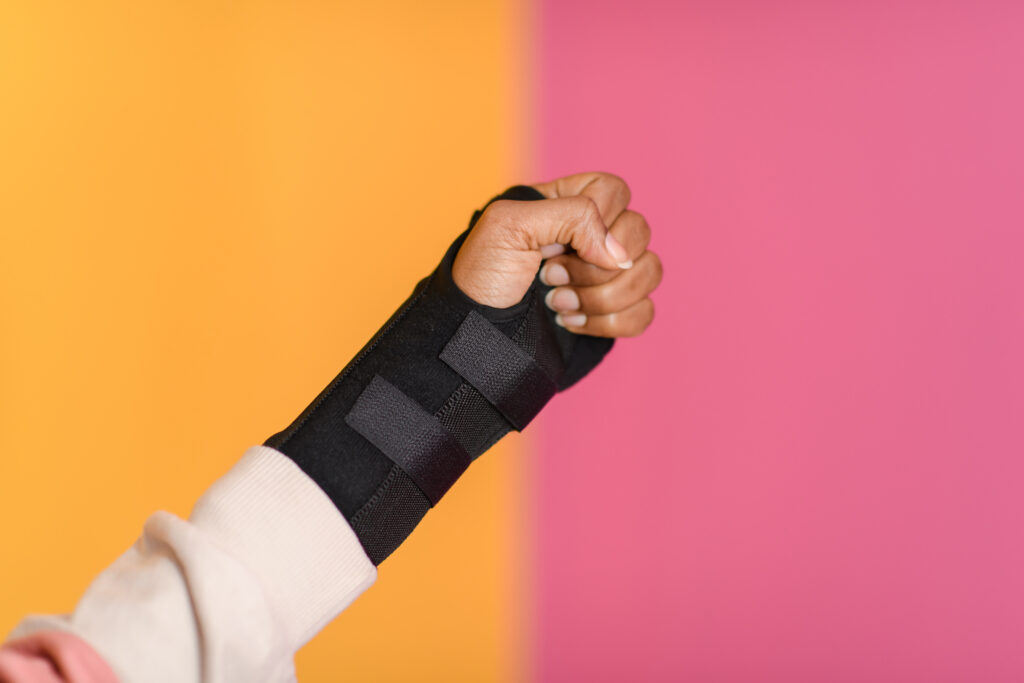















![FREETOO Wrist Brace for Carpal Tunnel,[New Upgrade-Anatomically shaped] Adjustable Wrist Support Splint for Men and Women,Hand Brace for Pain Relief, Tendinitis,Arthritis,Right Hand,Medium](https://m.media-amazon.com/images/I/41NA1EJkUdL._SL160_.jpg)




